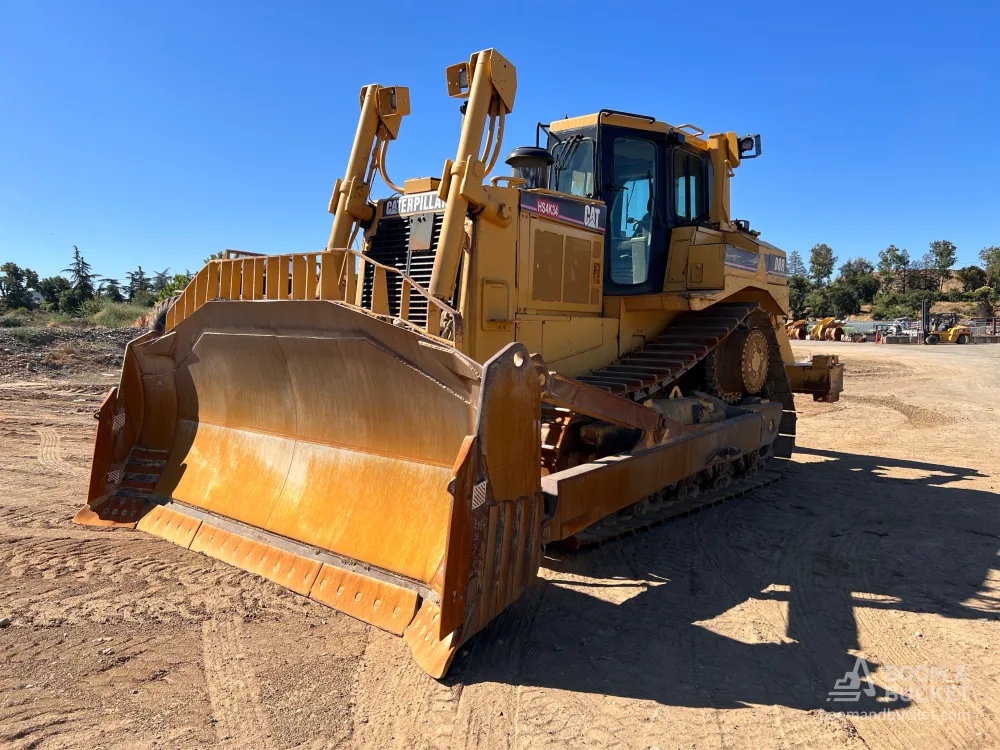Intro to Aggregate Equipment: Aggregate Conveyor Systems
5 Min read
)
September 6, 2023
In construction, mining, and material handling, the efficiency of moving bulk materials from one point to another is paramount. This is where aggregate conveyor systems come into play.
In this article, we will explore what aggregate conveyors are, how they work, and how they can be employed, shedding light on the various types and their critical role in optimizing material handling processes.
What Are Aggregate Conveyors?
:format(webp))
Aggregate conveyor systems, often called "conveyors," are integral to material handling systems. They are designed to transport bulk materials, such as aggregates, gravel, sand, or even heavy-duty construction materials, efficiently and continuously from one location to another.
These conveyors play a vital role in various industries, ensuring the seamless movement of materials across job sites, production facilities, and storage areas.
You can even purchase a custom-designed conveyor if your operation has particular needs. Remember that finding replacement parts in your local repair shop may be challenging with a custom-designed machine.
How Do Aggregate Conveyors Work?
:format(webp))
At the heart of a conveyor belt lies a conveyor system, a mechanical apparatus with a continuous belt that rotates around a series of pulleys.
The belt is specifically designed to carry bulk materials, and it operates by being driven by an electric motor, engine, or other power sources.
The material to be transported is loaded onto the conveyor at one end and then moved along the belt to its destination, where the unloading will occur.
The key components of an aggregate conveyor system include:
Belt:
The conveyor belt is the system's backbone, providing a stable surface for moving materials. Different belt widths are available to accommodate various types and quantities of materials.
Pulleys:
Pulleys are used to support and guide the conveyor belt. There are both drive pulleys, which provide power to the belt, and idler pulleys, which maintain belt tension and alignment.
Drive Mechanism:
The drive mechanism, typically an electric motor or engine, powers the conveyor by turning one of the drive pulleys. The horsepower of the drive mechanism will vary based on how heavy the materials it needs to carry are.
Support Structure:
The conveyor system is often mounted on a robust support structure, ensuring stability and proper alignment.
Types of Aggregate Conveyors
:format(webp))
There are many different aggregate conveyor types on the market, each designed to suit specific applications and materials. To ensure that your convertor belt is as easy to manage as possible, it's essential to pick the right type.
Some common types include:
Overland Conveyors: These conveyors are used for long-distance material transport, typically over rough terrain. Overland conveyors connect remote mining sites or convey materials over challenging landscapes.
Portable Conveyors: Portable conveyors are versatile and can be easily moved from one location to another. They are commonly used in construction projects requiring material transport across various job site locations.
Radial Stackers: A radial stacker is designed to create stockpiles of materials in a circular or semi-circular pattern. Radial stackers are particularly useful for creating storage areas for bulk materials.
How Can Aggregate Conveyors Be Used?
:format(webp))
Conveyors find application in various industries and scenarios due to their versatility and efficiency. Here are some of the primary ways in which they are employed:
Construction: In construction projects, conveyors are used to transport materials like gravel, sand, and concrete mixed from mixing plants to construction sites. This minimizes manual handling, reduces labor costs, and accelerates project timelines.
Mining: Conveyor systems are essential in mining operations, where they facilitate the transportation of minerals, ores, and extracted materials from the extraction point to processing facilities or storage areas.
Quarrying: In quarries, these conveyors are instrumental in moving bulk materials such as crushed stone, sand, and gravel to processing and stockpiling locations, optimizing quarry operations.
Agriculture: Agricultural operations use conveyors for loading and unloading grains, seeds, and fertilizers. They also help move bulk materials within storage facilities.
Manufacturing: Within manufacturing facilities, conveyors assist in moving raw materials, semi-finished products, and finished goods between different stages of production, enhancing efficiency and workflow.
Warehousing and Distribution: In warehousing and distribution centers, conveyors are crucial in moving packages, pallets, and goods, reducing manual labor and streamlining the loading and unloading.
Recycling: Recycling plants utilize custom-designed conveyors to efficiently transport and sort recyclable materials, aiding in recycling and reducing waste.
Efficiency and Cost Savings
:format(webp))
Beyond their versatility, aggregate conveyor systems offer significant efficiency and cost savings advantages.
By automating material handling processes, these conveyors reduce the reliance on manual labor. This improves overall safety by minimizing the risk of injuries and improving overall workflow.
Moreover, they can help to limit fuel costs by optimizing material transport and reducing the need for multiple trips by trucks or other vehicles.
This can help your company to save time and money, keeping your business as efficient as possible.
Conclusion
:format(webp))
Aggregate conveyors are the unsung heroes of various industries, silently but efficiently moving bulk materials from one point to another.
Understanding their role, mechanics, and diverse applications underscores their importance in modern material handling processes. From construction to mining, manufacturing to agriculture, and beyond, aggregate conveyors are indispensable tools that enhance efficiency, reduce labor costs, and contribute to the seamless flow of materials in various industries.
If you have saved searches of aggregate conveyor systems just hanging out on your computer, now is the time to take action. At Boom and Bucket, we offer various models of used work and construction vehicles from all the most reliable brands.



